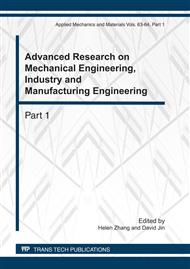p.106
p.111
p.115
p.119
p.124
p.129
p.134
p.138
p.142
Application of Independent Component Analysis in Short-Term Power Forecasting of Wind Farm
Abstract:
For the difficult problems of measuring and forecasting values interfered by a number of factors, this paper proposed a method of power forecasting based on independent component analysis and least squares support vector machine, and results are modified using the regression. Each independent component from source signals is predicted using least squares support vector machine, the final prediction results obtained by modifying the preliminary predicting power according to the relationship between wind speed and its power. Using the data from a wind farm on the Northeast China wind farm, the simulation results show that this method has higher prediction accuracy, and the mean absolute error from 9.25% down to 5.48%, compared with the simple least squares support vector machine models.
Info:
Periodical:
Pages:
124-128
Citation:
Online since:
June 2011
Authors:
Price:
Сopyright:
© 2011 Trans Tech Publications Ltd. All Rights Reserved
Share:
Citation:


